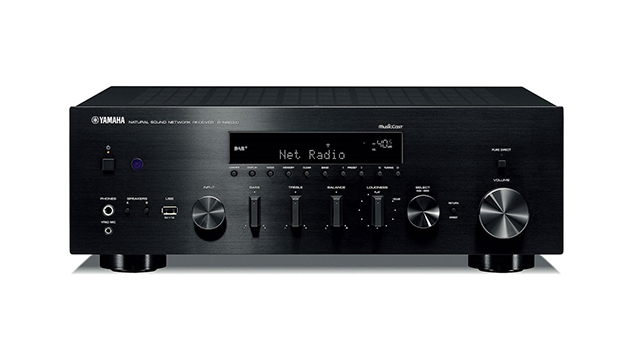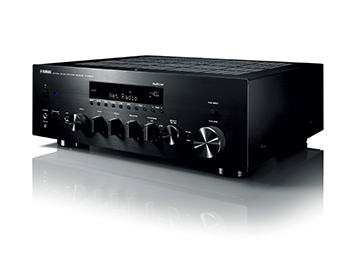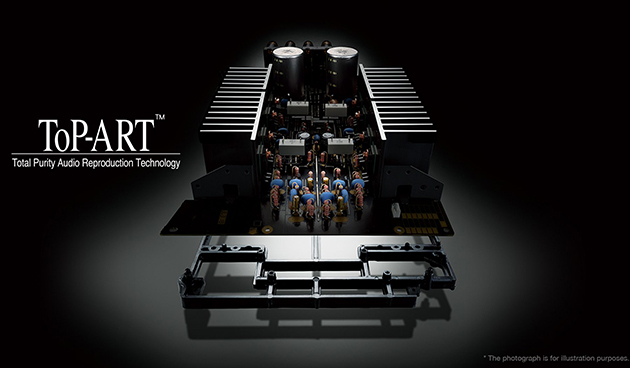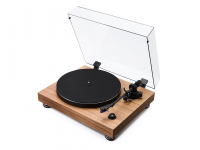
In modern times, hifi has had to be adaptive to technological change moving at a pace never seen before. The way we all consume and enjoy our music has altered and hifi companies have had to keep up. Today, we’re looking at a typical example in Yamaha’s new RN803D which comes packed with modern features to compliment a classic sound. Let’s see just what makes this amplifier perfect for the connected world we live in…
The first thing that jumps out when we get the unit out of the box is the sheer number of both analogue and digital inputs. Yamaha has packed ten inputs into the RN803D with four line level inputs for connecting devices such as CD players, while also including two line outs which are perfect for use with a tape or CD recorder.
One of the most surprising revivals in recent years has been the growing resurgence of vinyl and the RN803D doesn’t forget to pack a great phono stage into the mix. Sadly, this is overlooked on a lot of modern amps due to a lack of popularity in the recent past but it’s nice to see this option covered too.
 On the digital side of things Yamaha has included two coaxial digital inputs and two optical inputs which are perfect for connecting a TV to take advantage of the great sound you get from a hifi amp. This could potentially save several hundred pounds on a soundbar, so it’s good to see this option included. It also means if you have an older CD player, you may have the option of taking advantage of the excellent modern digital components to improve the sound. There is also a USB input on the front which is great for plugging in a hard drive as a quick way to move music around the house. All these digital inputs benefit from the inclusion of an excellent DAC (Digital to Analogue Converter) which really digs into the detail of your digital files.
On the digital side of things Yamaha has included two coaxial digital inputs and two optical inputs which are perfect for connecting a TV to take advantage of the great sound you get from a hifi amp. This could potentially save several hundred pounds on a soundbar, so it’s good to see this option included. It also means if you have an older CD player, you may have the option of taking advantage of the excellent modern digital components to improve the sound. There is also a USB input on the front which is great for plugging in a hard drive as a quick way to move music around the house. All these digital inputs benefit from the inclusion of an excellent DAC (Digital to Analogue Converter) which really digs into the detail of your digital files.
 In addition to all these physical inputs, Yamaha has also included their own MusicCast system. This multiroom system allows you to play music all over the house when you connect up compatible MusicCast speakers. There is also support for Airplay allowing you to stream any audio from your Apple device as well as Bluetooth built in. For audiophiles there is also access to the Qobuz and Tidal Hi-Res streaming services for the very best quality. If you’re more of a radio fan, then there is a DAB tuner built in and streaming services from TuneIn for access to stations all over the world. This is about as complete a list of audio inputs as you could possibly hope to come across and is probably the RN803D’s greatest strength.
In addition to all these physical inputs, Yamaha has also included their own MusicCast system. This multiroom system allows you to play music all over the house when you connect up compatible MusicCast speakers. There is also support for Airplay allowing you to stream any audio from your Apple device as well as Bluetooth built in. For audiophiles there is also access to the Qobuz and Tidal Hi-Res streaming services for the very best quality. If you’re more of a radio fan, then there is a DAB tuner built in and streaming services from TuneIn for access to stations all over the world. This is about as complete a list of audio inputs as you could possibly hope to come across and is probably the RN803D’s greatest strength.
However, none of this means anything if the RN803D doesn’t convert such a wide range of sources into a great sound. To really see what this amplifier can do we connect it up to a pair of Monitor Audio Silver 50 speakers which are some of our favourite bookshelf speakers in the Brighton store. To start with we wanted to test the rhythm and dynamics of this unit so play the track “Signs of Life” by Arcade Fire. This track has a great bass line and really shows up amplifiers with a lack of timing. I’m happy to report that the RN803D passed impressively. Every pluck of the bass guitar was reproduced with accurate timing and had us tapping our feet along to the music. We also noticed the impressively wide sound stage which was on show here, something which shows the power behind this streamer.

One of the reasons for this great sound is doubtless the ToP-ART (Total Purity Audio Reproduction Technology) design that Yamaha has drawn heavily on for the layout of this unit. This design language lays out the signal path of the audio in complete symmetry giving you a balanced sound with little unwanted interference. And if you want to further simplify the signal path of the audio you can also turn on the pure direct function with a button on the front panel. This bypasses all the effects of the adjustable bass, treble and balance giving you the purest possible sound.
The next feature we wanted to test out was the slightly unusual inclusion of Yamaha’s home cinema adjustment microphone under the name YPAO (Yamaha Parametric Acoustic Optimiser). We set up the microphone in our demo room and let the unit get to work. After only a few minutes of emitting odd beeps the unit was calibrated for the room. We tested the same Arcade Fire track and found a noticeable improvement in the sound. There was a definite adjustment when we positioned the speakers in an unideal position to test this feature, giving us a more balanced sound and leaving us pleasantly surprised. It’s a feature that some with a perfect audio layout may not find much use for, but for anyone who must make even a small compromise in the room layout this is a supremely useful feature.
All in all this Yamaha provides a huge selection of features and should provide something for everyone. Even if the sound did not match up to other units in this category it would still be worth considering due to the sheer number of options it gives you. Happily, there is a great full sound to marry with the plethora of features making this is great option for those looking for a one box solution who want a bigger and better sound than available from a mini system. So, come down to your local Richer Sounds today and have a listen for yourself. You won’t be disappointed.
Click here to learn more about the Yamaha RN803D
Author: Robert, Brighton store





